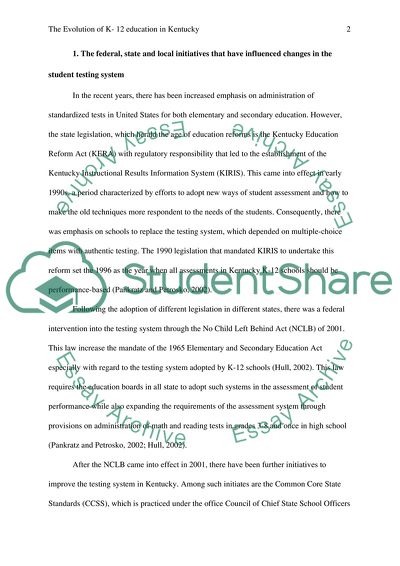Cite this document
(The Evolution of K-12 Education in Kentucky Assignment Example | Topics and Well Written Essays - 2000 words, n.d.)
The Evolution of K-12 Education in Kentucky Assignment Example | Topics and Well Written Essays - 2000 words. https://studentshare.org/education/1836990-the-evolution-of-k-12-education-in-kentucky
The Evolution of K-12 Education in Kentucky Assignment Example | Topics and Well Written Essays - 2000 words. https://studentshare.org/education/1836990-the-evolution-of-k-12-education-in-kentucky
(The Evolution of K-12 Education in Kentucky Assignment Example | Topics and Well Written Essays - 2000 Words)
The Evolution of K-12 Education in Kentucky Assignment Example | Topics and Well Written Essays - 2000 Words. https://studentshare.org/education/1836990-the-evolution-of-k-12-education-in-kentucky.
The Evolution of K-12 Education in Kentucky Assignment Example | Topics and Well Written Essays - 2000 Words. https://studentshare.org/education/1836990-the-evolution-of-k-12-education-in-kentucky.
“The Evolution of K-12 Education in Kentucky Assignment Example | Topics and Well Written Essays - 2000 Words”. https://studentshare.org/education/1836990-the-evolution-of-k-12-education-in-kentucky.


